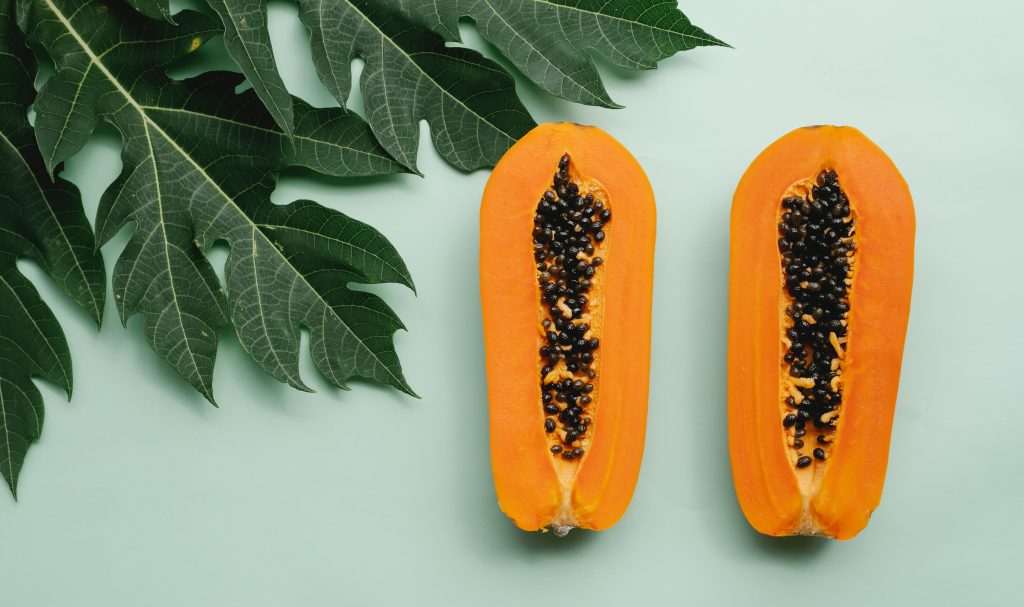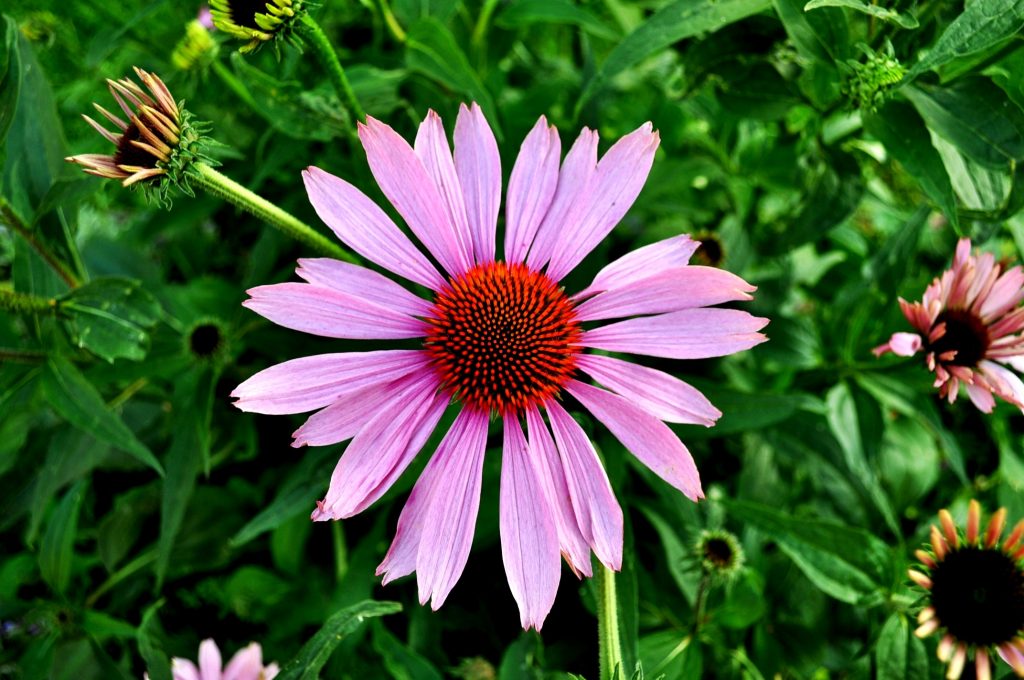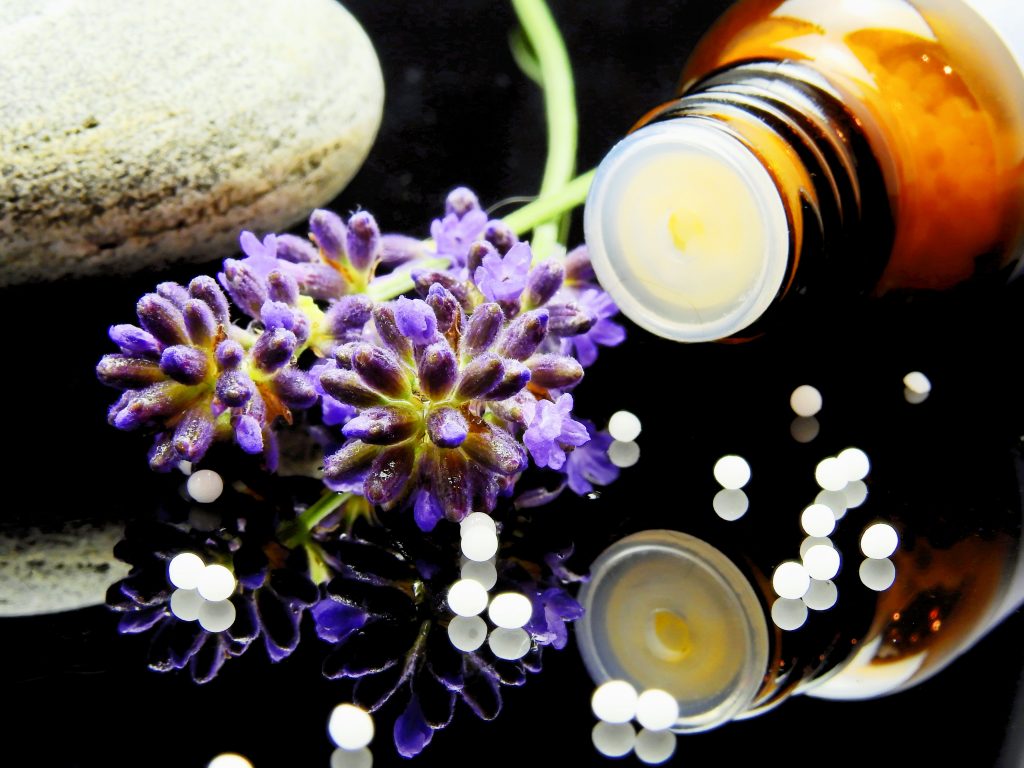
Acne is not an easy condition to manage, especially if it persists beyond adolescence. Apart from causing physical discomfort, acne can have some psychosocial consequences causing low self-esteem, social isolation and depression. Sometimes using home remedies for acne and properly identifying those foods that affect acne is all that is needed to deal with this distressing condition.
Acne is a chronic inflammatory disorder of skin follicles and is characterised by inflamed spots on the face, neck, back and chest. Increased sebum (natural oil lubricant) together with clogged pores is directly related to the severity of this condition.
Acne is one of the most common skin problems in the world, affecting up to 80% of individuals between 12 and 25 years of age. Studies have shown a high incidence of acne in girls aged 14 - 17 and in boys aged 16 - 19 years.
Genetics, youth, male sex, stress, smoking and use of cosmetics with pore-clogging ingredients are some of the factors that contribute to the onset of acne. A treatment regime aimed at reducing inflammation, and controlling sebum production and unclogging the pores has been found to be effective in getting rid of spots.
Mostly, acne resolves by itself by the time someone reaches their early twenties, however the chronic cases may persist into adulthood- this pattern tends to be more common in females. Cysts and scarring are the characteristic features of long standing and severe cases.
Home Remedies for Acne
The main goal of acne treatment is to control and treat acne lesions, prevent permanent scarring and limit the duration of the condition. Some home remedies discussed int this section have been used with benefit in reducing acne inflammation and controlling breakouts.
Apple cider vinegar
Apple cider vinegar has been used with considerable benefit for restoring the normal pH of skin, acting against bacteria and regulating sebum (oil) production. Some studies have shown considerable effectiveness of apple cider vinegar in controlling inflammation and consequent breakouts of acne. Alpha hydroxyl acids in apple cider vinegar are believed to eliminate dead cells and unclog the pores, which helps in acne clearing.
How to use
1/4 cup of apple cider vinegar mixed with 1/8 cup of water may be applied directly on the skin with a cotton swab. Alternatively a mask made by 1/2 avocado and 1/4 cup of apple cider vinegar mashed to the consistency of a paste, may be used.
Raw papaya

Raw papaya fruit has been used as a natural treatment for acne. Papaya contains an enzyme papain, which is believed to control inflammation and pus formation. It also removes dead cells leaving the skin smooth and supple whilst clearing the dirt from skin pores.
How to use
Scrubbing the fleshy side of the skin of a half-ripened papaya can be used in controlling the outbreak of acne. Alternatively, mash up the flesh of a ripe papaya to a consistency that can be applied directly. Leave on the skin for 10-15 minutes before rinsing with warm water.
Cinnamon and honey
Although the old home remedy of cinnamon and honey has been used with considerable benefit for clearing spots and reducing inflammation, more research is needed to ascertain its scientific authenticity. Cinnamon has been found to have anti-bacterial effects against acne according to a report published in 2017. But this report called for more trials and studies in order for results to be conclusive. Separately, in other studies honey has been reported to limit acne owing to its antibacterial properties.
How to use
A teaspoon of cinnamon mixed in a tablespoon of honey to the consistency of a paste may be used as a mask. This can be applied to the the skin for 10-15 minutes and before rinsing with lukewarm water and patting dry.
Lemon juice
helps to dry up excess oil and flush the pores. Its disinfectant and exfoliant properties have been beneficial in clearing acne and toning scars. Lemon juice is also believed to stimulate the blood circulation which helps with the supply of required nutrients to skin.
How to use
two freshly squeezed lemon juice diluted with 1/2 cup of water may be applied topically. Lemon contains citric acid which can be an irritant for skin, therefore it must be used in moderation.
A trial with a small amount of diluted lemon juice to test the affected area before applying fully, is a good precaution to take.
Tomatoes
Tomatoes are rich in antioxidants and are good source of vitamin A, vitamin C and lycopene. All these have a beneficial effect on healing inflamed spots. Lycopene is a powerful antioxidant, which is found in high end facial cleansers. Tomatoes have also been generally credited with getting rid of spots.
How to use
Blend two medium sized tomato in a blender and apply directly to the face. Leave on for 10-15 minutes and then wash off and gently dab face with a smooth towel. Alternatively, cut a tomato in two halves and place flesh-side up on the affected area for up to 15 minutes before washing.
Tea tree oil
helps to control infection and speeds up healing of blemishes. Research has found that 5 per cent tea tree oil is as effective against acne as a 5 per cent benzoyl peroxide solution, but with fewer side effects. Another study conducted on a sample size of 18 individuals concluded that use of tea tree oil significantly improved mild to moderate acne and that it was well tolerated.
How to use
A drop of tea tree oil can be applied directly three times a day to the affected area.
A clinical study showed that a combination of tea tree 3%, aloe vera 10% and propolis 20% has potent antibacterial and anti-inflammatory properties. And these products used combined are more efficacious than being used as single product even at higher concentration. This formulation can be prepared at home by mixing these ingredients in desired proportions in petroleum jelly.
Baking soda
Baking soda is another effective treatment for acne. It has been used with considerable success in clearing acne. It has also been found to be effective in clearing red marks from the skin, leaving it smooth. Bicarbonate in baking soda helps to fight fungus and bacteria and dry up excess oil. Baking soda may be at times a mild irritant for skin causing excessive dryness and may leave a burning sensation.
How to use
Mix two tablespoons of baking soda in 100 ml water and apply the resultant paste on the affected area in slow circular motions. After 6-8 minutes of gentle massaging, wash the face thoroughly with lukewarm water.
Echinacea

Echinacea is a natural treatment for acne and for other skin lesions including wounds, and its safety and efficacy has been reported in a laboratory study. Echinacea is known for its antiviral, anti-inflammatory and antibacterial properties and has been traditionally used with noticeable success for treating acne. A study positively reported the efficacy of Echinacea herbal extract against a strain of bacteria in the laboratory. Its topical and oral use combined may assist in nurturing healthy skin.
How to use
Echinacea tea can be used to make a daily face wash by adding two teaspoons/tea bags of Echinacea tea in 250 – 300 ml water. This can be brought to a boil and then left to become lukewarm before dabbing it on the affected area with cotton wool. Alternatively, drinking Echinacea tea has been found to be helpful in clearing spots and acne due its immune boosting attributes.
Chasteberry tea
Chasteberry helps to tame the flare up of acne and spots that appear before a mensural period. Some studies show that this herb helps to regulate female hormones.
How to use
Drinking 1 to 2 cups of chasteberry tea for two to three months has been associated with beneficial effects for premenstrual acne.
Zinc
Zinc is a promising alternative to other acne treatments due its influence on acne. In one study, subjects with the most advanced acne in the group had lower mean serum zinc than other subjects in the study.
Some studies have found that zinc supplements can reduce acne. And in one study subjects’ treatment with zinc reported a significant improvement in mean inflammatory papule count compared to those who were not treated with zinc.
How to use
Oral intake of zinc supplements must be kept to moderate level, as too much zinc can cause copper deficiency. One study reported the effectiveness of zinc with moderate doses of 30mg of zinc per day.
Rose water
Rose water has been traditionally used for many skin problems including acne, making it a remedy of choice for healthy skin. It serves equally well when used as a cleanser or facial wash. Its regular use for two to three months has helped in achieving a clear complexion.
Some anti-microbial properties has been attributed to it, but the scientific backing to this claim is limited. Even so, one study reported its anti oxidant and anti-inflammatory activity helping to control acne.
How to use
Virgin extract of rose may be purchased from a health and beauty store and used 2-3 times liberally on the face for two months.
Diet and Acne
There is no silver bullet when it comes to optimal foods to cure acne. Diet alone may not be sufficient to treat acne, but will be part of an overall regime to treat acne. Thus the right foods can make a significant difference. Furthermore a correlation between diet and acne has been highlighted in recent studies.
As for any other conditions, a healthy and balanced diet would beneficially affect acne treatment. Therefore, the use of vegetables, whole meal food, legumes and cultured/probiotic food may be incorporated into the diet plan to augment the benefits of home remedies.
On the other hand some foods are known to cause acne. Scientific research and anecdotal use has helped to identify the food items which can cause acne flares.
In this section a correlation of foods that help or cause acne has been discussed with a focus on their use as part of acne treatment.
Foods to Help Acne
Dietary Fibre
A 2016 survey study conducted to explore the connection between diet and acne reported that acne patients consuming foods with higher dietary fibre generally observed an improvement in their condition.
Dietary fibre is prebiotic, which beneficially modulates gut micro biome, which in turn helps to inhibit inflammation. It is also a constituent of complex carbohydrates having a low glycemic index. Beans, lentils, broccoli, avocado, corn on cob, berries and apple are a few examples of foods having high dietary fibre.
Vitamin A
Vitamin A is an antioxidant, which helps to keep inflammation under control. It has helped acne patients in clearing spots and blemishes. A survey study reported highest proportion of respondents extolling its benefits for acne treatment.
Although vitamin A supplements can be purchased from health stores, their use should not be exceeded beyond the recommended daily dose of 5000 IU. On the other hand sweet potatoes, carrots and dark green vegetables are good sources of vitamin A, which may be incorporated in the overall diet plan.
Carotenoids
Foods containing carotenoids have been generally linked with good skin health and reduction in pimples. Additionally, eating these colourful foods, high in carotenoids such as carrots, tomatoes and peppers give a healthy glow to skin. For those seeking healthy skin, a diet supported by food rich in carotenoid pigments have also been shown to induce brightness.
Protein
Foods that are rich in protein are a source of amino acids, which are used to make collagen; collagen is an essential constituent of healthy skin cells, providing strength, firmness and elasticity to the skin matrix. A lack of collagen may result in saggy and wrinkled skin thereby affecting overall skin health. Poultry, fish, cottage cheese, soy and egg whites are healthy sources of protein, which may be included in the diet to boost collage production.
Omega-3 fatty acid
Omega 3 fatty acid is anti-inflammatory and has been used with some benefit in treating acne. One study found that adolescents who consumed large amounts of fish and seafood, which are rich in omega-3 fatty acids, appeared to be less prone to manifest acne. It also suggested that omega-3 fatty acid is helpful in controlling inflammatory papule and improving global aspect of wellbeing. Salmon, mackerel, flaxseed, chia seeds and walnuts are natural sources that are rich in omega-3 fatty acid.
Foods that Cause Acne
High glycemic index food
There is some research evidence that supports a link between high glycemic index diet and acne. Foods with high glycemic index, such as sugar and refined carbohydrate are rapidly absorbed, leading to higher blood glucose levels, which results in a metabolic reaction resulting in elevated levels of insulin.
Increased levels of serum insulin have been shown to augment sebum production, which play a role in causing acne. An insulin rush has also been associated with the pro–inflammatory state of the body.
This theory has been tested in several trials and in one, a 10-week low glycemic diet resulted in the improvement of acne, with skin showing decreased inflammation and reduced sebaceous secretion.
Sugar, soda drinks and even innocuous foods, such as white bread, pasta, white rice and other refined carbohydrates, when part of an overall high glycemic index diet, may exacerbate ace.
The role of Western diet has also been researched as a potential cause of acne. Researchers have noted that the Western diet typically corresponds to the high glycemic diet, which makes it a probable trigger for acne.
It is interesting to note that chocolate as a dietary factor triggering acne is a long-held belief. But at this point there is no evidence to suggest that a factor specific to chocolate can trigger acne. Rather, research points to its sugar content and contribution to high glycemic index diet as a probable cause.
Milk and dairy
Acne patients who keep a track of their diet have found that milk is one of the most common food implicated in acne flare-ups. A more recent report also supporting the association between milk consumption and acne revealed that intake of milk during adolescence was associated with a history of teenage acne.
The association of skimmed milk and acne is more marked than for other forms of milk suggesting that the fat content of milk was not a trigger for acne. Instead, some researchers hypothesised that skimmed milk tiggers acne because the responsible hormones are less diluted in it due to lack of fat contents. And acne, particularly in teenagers are correlated with hormonal activity.
Scientific backing for other dairy products such as cheese being a probable cause of acne is not as strong. But if you are acne prone, it would be a good idea to switch to soy, almond or rice milk and avoid dairy products.
Fried and greasy food
Acne patients have a usual perception that increased intake of greasy and fried food would lead to an outbreak of acne. A survey conducted in 2018 to explore beliefs concerning the relationship between diet and acne, reported that out of 104 acne patients that were surveyed, 73 chose a category that patients have historically described as an acne trigger food: that of fried and greasy food.
But some large studies have been unable to consistently prove that these common food culprits cause acne. That said, it is plausible on individual basis, that certain foods do trigger acne in certain patients. For example, if you notice that every time you eat fried chips, you break out with pimples, then fried chips may be the culprit. And certainly, it is a better idea to avoid these oxidative foods altogether.
Coffee
Although there is no conclusive scientific evidence to suggest the relationship between coffee and acne, we can make certain assumptions based on the known effects that coffee and caffeine have on our body.
Coffee is a stimulant of the nervous system, and it can also sometimes exacerbate sebum production, which is a known acne trigger. Correspondingly some survey studies have suggested a decrease in acne in those subjects who excluded coffee from their diet. But this may in part be due to milk and sugar that is added in the coffee. So, the exclusive effect of coffee on our skin in not too well understood as yet.
However, there is sufficient anecdotal evidence to consider coffee as a probable cause of acne, so excluding this from diet may be worth trying.
Alcohol
When it comes to the appearance and health of our skin, alcohol is almost always detrimental. In the short term it dehydrates the skin, giving it a sallow and puffy appearance, and the sugar that saturates most cocktails also aggravates acne and may even hasten wrinkles.
Alcohol’s main breakdown product, acetaldehyde, inflames the skin, releasing histamine that dilates blood vessel and causes characteristic facial flushing.
So, it may be safe to conclude that alcohol has a detrimental effect on the general health of skin, and it may set off acne.
Homeopathy for Acne

Homeopathy is the second most common form of Alternative and Complementary Medicine used by outpatient dermatology patients, with acne comprising the most common disorder for which it is used. There is some data to suggest that homeopathy may improve acne and acne scars, providing a rationale for using this approach to treat patients. Patients also increasingly demand therapies that they feel may offer them relief with minimal side effects, both of which homeopathy is reputed for. In this section, I will discuss some homeopathic remedies that have been used with considerable success in treating acne.
Sulphur
This is one of the most important remedies for acne, especially if the acne is chronic and recurrent. The area around the spots burns and itches. The skin of the face is rough, dry and hard. The acne may be associated with large comedones and boils. Any kind of water touching the skin is aggravating. The person tends to suffer from constipation and looks dry and disheveled.
Pulsatilla
A woman who has acne, especially around the time of a menstrual period, may respond well to Pulsatilla. It is particularly suitable to the person of an emotional disposition, and to those who are sensitive to cold. Such persons usually desire comfort and consolation.
Nux vomica
Nux vomica May help relieve acne for people who drink too much alcohol, smoke heavily, and generally abuse or overwork themselves. People affected with this type of acne often have stomach problems, such as increased acid or constipation.
Silica
Silica is useful for very cystic acne to help drain whiteheads. When given in high potency, this remedy helps stop the formation of boils. Silica is a very important remedy for healing the area after the boil has drained, and it helps form stronger and healthier tissue. This remedy also helps prevent scars after a large, cystic acne has formed.
Graphites
Graphites is useful for treating pimples that tend to ooze a sticky, thin discharge. Cracks may form around the acne, and eczema on the face may generalise in one area. The person is generally constipated and acne is worse around the time of menstrual period.
Summary
Chronic acne is a distressing condition having a bearing on the physical and emotional wellbeing of patients. A holistic treatment strategy based on the individual needs of the patients may significantly help in relieving this condition. Home remedies for acne when used in combination with the dietary precautions and healthy lifestyle choices have shown to have a beneficial effect in treating acne.
Besides this, there are some other aggravating factors for acne such as stress and anxiety, exposure to sunlight, heat during summer, and excessive sweating. These factors need to be identified on a personal level to take remedial measures against them.
Self awareness and a knowledge of available treatment strategies is vital in determining a bespoke acne treatment protocol.
For queries and appointments please contact here

